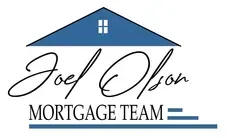Getting a Mortgage During COVID-19

Houses are still selling and people are still looking to buy. Others are looking to improve their interest rate, and finally, there are many people looking to access current equity in their by refinancing.
Here are some answers to some common questions that we are seeing.
1. I heard rates are really low and that they will go even lower.
Rates went down in the time period that we call “Pre-local” COVID-19. That means when we were still leaving our house, but everyone knew it existed and it was wreaking havoc on China’s economy. China being 20% of the world economy means that this had an effect on interest rates driving them down really low for a few days. Once COVID-19 become local, which means we had local restrictions, you couldn’t leave home and places were shut down, interest rates went back up. This is because the banks all of sudden had less money to lend. Best way to understand this is that over a period of a short amount of days, people dumped their money out of the stock market and went and stuffed their money under a mattress. There is a bit more to it than that, but that’s more on less what happened. Now, the government is giving money to banks through various methods which means that this will at some point lower fixed rates down.
2. I see that the Bank of Canada has lowered rates three times. How does this affect my mortgage?
The Bank of Canada lowering rates does not directly create any difference to your mortgage. The overnight rate is a rate at which banks borrow money from each other. This affects lots of things but does affect the prime rate that lenders can offer a client. Thus, if you have a variable rate when banks lower the prime rate you variable rate goes down. It is not automatic that the overnight rate changes the prime rate though.
Currently, most banks passed on the savings to clients, so if you had a variable pre-march, the last thing you should do is lock-in.
If you haven’t seen your payment or interest rate go lower, don’t worry that letter is coming from your lender.
3. Should I defer my mortgage? Isn’t it free money?
Deferring your mortgage is not free money. You take whatever your payments are and they are added to your principal. This means that whatever money you add to your mortgage you are now paying interest on the extra. Does that mean its a bad idea? If you are out of work and can’t make your mortgage payments, it is still a much better option then the alternatives that exist.
4. Can I still get approved for a mortgage if I’m not working?
It really depends on your situation, if it is likely that you will go back to work as soon as restrictions are lifted. It’s quite possible. Additionally, if you are self-employed, we are still looking at your situation from what you made historically.
5. Should I get pre-approved, if I want to buy much later in the year?
Yes, you should because we can get you ready and make sure there are no issues that might come up later.
As always, everyone’s situation is highly personal, so feel free to reach out so we can go through your specific options.





